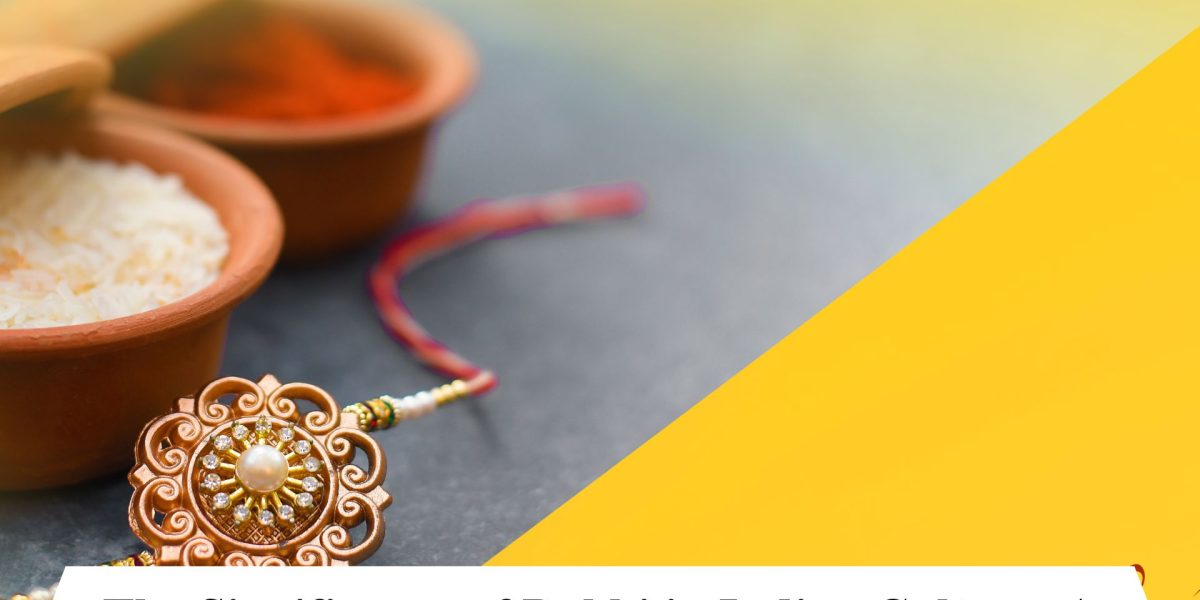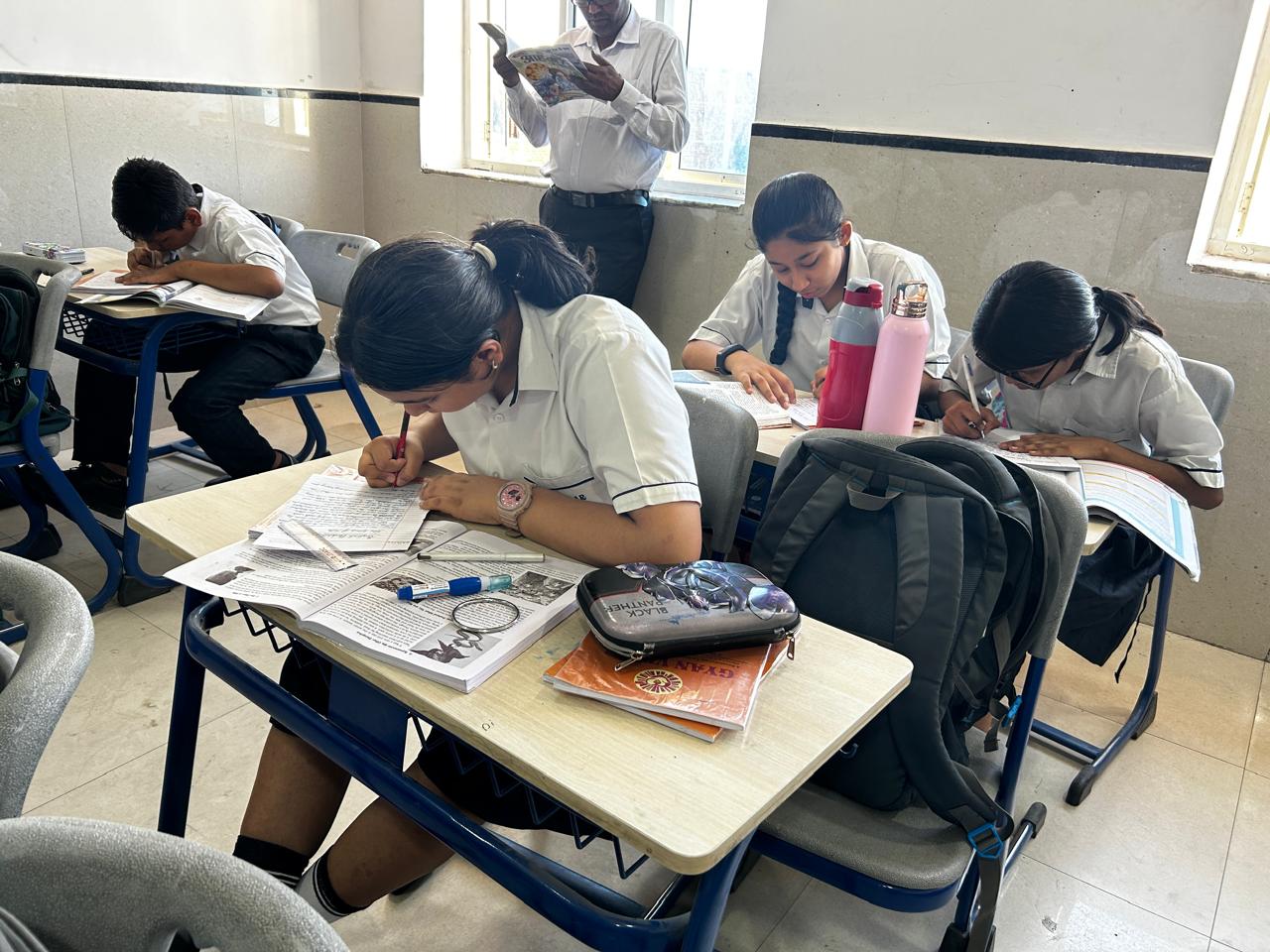India, a land of diverse cultures and traditions, celebrates numerous festivals that bring people together, fostering unity and joy. One such festival is Rakhi, also known as Raksha Bandhan, which symbolizes the deep bond between brothers and sisters. Celebrated with great enthusiasm across the country, Rakhi transcends beyond the familial bond, reflecting broader social values. This blog, specially crafted for the students of Gyan Vihar School, one of the CBSE Schools in Jaipur, explores the significance of Rakhi in Indian culture and its historical journey.
Introduction to Rakhi
Rakhi, traditionally celebrated on the full moon day of the Hindu month of Shravan (July-August), is a festival that honors the love and duty between siblings. The word “Raksha Bandhan” translates to “the bond of protection,” wherein “Raksha” means protection and “Bandhan” means bond. On this day, sisters tie a sacred thread, known as Rakhi, around their brothers’ wrists, symbolizing their love and prayers for their brothers’ well-being, and the brothers’ lifelong vow to protect their sisters.
Historical Origins of Rakhi
Ancient Traditions and Myths
The origins of Rakhi are steeped in ancient history and mythology. Several legends from Indian scriptures highlight the significance of this festival:
- Draupadi and Krishna: One of the most popular legends is from the epic Mahabharata. When Draupadi tore a strip of her saree to bandage Lord Krishna’s wrist, he vowed to protect her in return. This act is considered one of the earliest references to the Rakhi tradition.
- Rani Karnavati and Emperor Humayun: Another significant story is of Rani Karnavati, the widowed queen of Chittor, who sent a Rakhi to Mughal Emperor Humayun when her kingdom was under threat. Touched by her gesture, Humayun rushed to her aid, exemplifying the protective bond symbolized by Rakhi.
Historical Context
Rakhi has been more than just a familial ritual. Throughout history, it has been a symbol of unity and protection. During the struggle for independence, the festival was used by leaders like Rabindranath Tagore to promote harmony and brotherhood among different communities.
The Cultural Significance of Rakhi
Symbol of Love and Protection
At its core, Rakhi embodies the love and care between siblings. The sister ties the Rakhi, a protective talisman, on her brother’s wrist, and in return, the brother promises to protect her from all harms and troubles. This mutual exchange of love and duty strengthens the sibling bond.
Promoting Social Harmony
Rakhi transcends beyond the family, fostering social harmony. It is not uncommon for people to tie Rakhis to neighbors, friends, and even soldiers, promoting a sense of unity and communal harmony. This tradition emphasizes the Indian value of “Vasudhaiva Kutumbakam” – the world is one family.
Rakhi in Modern Times
In contemporary India, Rakhi has adapted to modern lifestyles but retains its core values. Today, Rakhi is celebrated with equal fervor across cities and towns, including Jaipur. The celebration in CBSE Schools in Jaipur, like Gyan Vihar School, involves various activities like Rakhi making competitions, cultural programs, and storytelling sessions that instill the festival’s values in students.
How Rakhi is Celebrated
Preparations and Rituals
- Shopping and Gifts: Preparations for Rakhi start well in advance. Markets are adorned with colorful Rakhis, sweets, and gift items. Sisters often shop for the perfect Rakhi, while brothers look for gifts to reciprocate their love.
- Rituals on the Day of Rakhi: On the day of Rakhi, siblings dress in traditional attire. The ritual usually starts with the sister performing an aarti (a ceremonial worship), applying a tilak (vermilion mark) on her brother’s forehead, and tying the Rakhi on his wrist. She then feeds him sweets, and in return, the brother gives her a gift and promises to protect her.
Celebrations in Schools
In top schools in Jaipur like Gyan Vihar School, Rakhi is celebrated with much enthusiasm. Activities such as Rakhi making competitions, role-plays, and cultural programs help students understand and appreciate the festival’s significance.
Rakhi in Different Parts of India
North India
In North India, Rakhi is celebrated with great zeal. The day is marked by family gatherings, feasts, and exchanging gifts. In cities like Jaipur, the festival brings a vibrant atmosphere with bustling markets and joyous celebrations in schools and homes.
South India
In South India, Rakhi is part of the Avani Avittam festival for the Brahmins. Here, the focus is more on the renewal of the sacred thread, but the sentiment of sibling protection remains significant.
West India
In Maharashtra, Rakhi coincides with Narali Purnima, a festival celebrated by the fishing community. Fishermen offer coconuts to the sea, seeking protection, and sisters tie Rakhis to their brothers.
East India
In West Bengal and Odisha, Rakhi is known as Jhulan Purnima. It is celebrated with Jhulan Yatra, dedicated to Lord Krishna and Radha, along with the Rakhi rituals.
The Evolution of Rakhi
From Traditional Threads to Modern Rakhis
Over the years, the design and materials of Rakhis have evolved. Traditionally, Rakhis were simple threads, but today they come in various designs, including beaded, zari, and even designer Rakhis. Eco-friendly Rakhis made from biodegradable materials are also gaining popularity.
Digital Rakhi
With the advent of technology, geographical distances no longer pose a challenge. Digital Rakhis and virtual celebrations have become a norm, especially in recent years, ensuring that the bond of Rakhi is celebrated irrespective of physical distance.
Rakhi: A Festival Beyond Boundaries
Rakhi for Soldiers
A beautiful tradition associated with Rakhi is the tying of Rakhis to soldiers. Many schools, including Gyan Vihar School, organize events where students send handmade Rakhis and letters to soldiers, acknowledging their role in protecting the nation.
Rakhi and Global Celebrations
Rakhi is not confined to India alone. Indian communities across the world celebrate this festival, keeping their cultural heritage alive. Countries like the USA, UK, Canada, and Australia witness grand Rakhi celebrations, fostering a sense of community among the diaspora.
The Educational Value of Rakhi
Teaching Values in Schools
Rakhi is an excellent opportunity for schools to teach students values such as love, duty, respect, and unity. Through stories, activities, and discussions, students learn the cultural significance and moral values associated with Rakhi.
Role of Gyan Vihar School in Promoting Cultural Awareness
As one of the best schools in Jaipur, Gyan Vihar School emphasizes the importance of cultural education. The celebration of Rakhi in the school curriculum helps students appreciate and respect Indian traditions, fostering a well-rounded personality.
Conclusion
Rakhi, a festival celebrated with immense joy and enthusiasm, is more than just a thread; it is a symbol of love, protection, and unity. From its historical origins to its modern-day celebrations, Rakhi continues to strengthen familial bonds and promote social harmony. Schools like Gyan Vihar School, recognized among the top schools in Jaipur, play a pivotal role in instilling these values in young minds, ensuring that the rich cultural heritage of India is cherished and passed on to future generations. Through the celebration of Rakhi, students learn the importance of love, duty, and unity, making them better individuals and responsible citizens.
By understanding the historical journey and cultural significance of Rakhi, we can truly appreciate this beautiful festival that celebrates the bond of protection and love.







